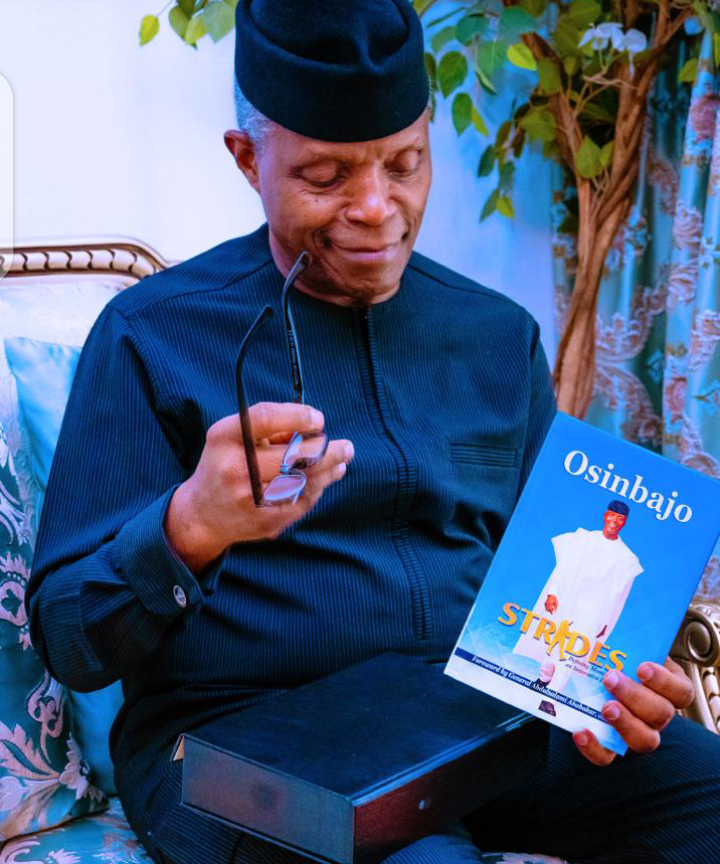By Mustapha Ogunsakin
In August 1999, Lagos State, Nigeria announced a 300 per cent increase in the emoluments of judicial officers, both in the high court and magistracy raising the take home pay of the judges higher than the Supreme Court justices. With this move, the new government of Mr Bola Ahmed Tinubu started the process of reforms in the administration of the justice system in the state which today, all the 36 states of the Federation, including the Federal government has also applied.
Prior to this increase, high court judges in the state earned a salary between N20,000:00, and N40,000:00, depending on their level of seniority. Magistrates earn between N6800:00 and N15,000:00 also depending on their level. Many magistrates cannot afford to buy cars, while the official vehicles for judges were Peugeot 504 cars, many of which had seen better days. It was not uncommon to see judges and their drivers pushing their vehicles on the streets of Lagos.
However with the increase, which was done by way of increment in allowances such as research grant, dressing allowances, transport allowance etc, the Chief Judge salary was increased to N150,000:00 as against N40,000:00 earned by his contemporaries in other states and the Federal High Court. This placed the salary of the Lagos Chief Judge above even the Justices of the Supreme Court, including the Chief Justice of Nigeria. It was such a radical move that soon attracted very stiff criticism and opposition despite its good intentions.
Prior to this increase, the whole of the judiciary in the state was in shambles. The premises of the High Court both at Igbosere, Lagos Island, and the Judiciary headquarters at Oba Akinjobi way, GRA, Ikeja looked more like junkyards than court premises. Vehicles and movable properties attached to litigations littered the premises, most of them for years, had decayed. Corruption was rife both at the high bench and the magistracy, as symbolized by the Justice Kayode Eso Panel Report.
This was the situation report when Governor Tinubu swore in Prof Yemi Osinbajo and other members of his cabinet in July, 1999. It was a herculean task salvaging the justice system.
Even before he was sworn in, he already had a team working on different sectors of the state and the justice system was not different. The man who would later become his Attorney General and Commissioner for Justice, Prof Yemi Osinbajo (as he then was) was already secretary of the Justice Reform Committee and they had already started work on how to reform the system.thanks.
Osinbajo will later tell this reporter on how he was able to hit the ground running: “We had several weeks of planning between when the governor was elected and when I was appointed and sworn in. So I came into the office with lots of ideas on what to do and what not to do”. Part of the ‘to do list’ was the increment in the emolument of the take home pay of judicial officers.”
However, as earlier mentioned, this move by the then Lagos State Governor was not without protest or controversy, as it was heavily criticized by some stakeholders in the system who insisted that it was a political strategy to cage the judges and remove their independence.
One of the harshest critics was the then Chief Judge of the Federal High Court, Late Justice Mahmoud Babatunde Belgore, who said that the increment was politically motivated. He argued that a situation where the Lagos State Government was paying its judges over and above other states will not augur well for an effective and efficient judiciary. This is more so, he argued, when some states still owe their judges three to four months salary. He concluded that apart from politicizing the judiciary,such arbitrary increase could drag the system into subservience.
Others also argued that the Lagos State move was illegal, quoting section 81(3) of the 1999 constitution which vests the remuneration of judicial officers on the National Judicial Council (NJC), the only body authorized by the constitution to collect money meant for judiciary from the Consolidated Fund for disbursement to heads of the national and state Judiciary.
Undaunted, Osinbajo, with the support of his governor, continued with this project, adding new Toyota Prado Jeeps and owner occupier houses to the perks for judges.
One year after, the Federal Government, through the then Solicitor General of the Federation, Mrs T.O Akerele, announced a pay rise and enhanced welfare package for judges. Akerele on the announcement said that “it will be deceitful to expect justice and its quick dispensation in a pervading regime of inadequate remuneration of judges, legal officers, and magistrates.”
All other states of the federation one by one, announced similar transformations for their judges and within two years, the judiciary in Nigeria changed forever due to the foresight of one man, Prof Osinbajo.
Most reforms in the justice sector in Nigeria followed similar patterns. Lagos State will introduce a reform, there will be wild outcry, other states and the Federal Government will follow suit by establishing the same reform.
A case in point is the establishment of the Office of the Public Defender(OPD) and Citizens Mediation Center (CMC), both under the Directorate of Citizens Rights in July 2000. Even lawyers in the Ministry of Justice could not understand how lawyers in the same ministry could oppose themselves in the same case, one defending the rights of a person while the other prosecuting the same person; or how a ‘government lawyer’ can sue the same government over the rights of a citizen. Many understand their job only as representing the state. In fact, both lawyers and citizens fear each other, believing that the two sides, like night and day, can never meet.
But then, Osinbajo came in and reconfigured the Justice Ministry as not only serving the interest of the government but also the defender of citizens rights! With this new vista comes more work and responsibilities for the lawyers. Those that cannot cope left government service while others, fascinated, plunged into their tasks with zeal, and made great success and career out of the job.

The founding director of OPD, Mrs Bisi Akinlade summed up the concept thus: The Office of the Public Defender, a sub-department of the Directorate for Citizens’ Rights (DCR) was established in July 2000, to fulfill the desires of the poor in the society towards access to justice. It was established under the OPD Law, 2003, reviewed in January 2008, to serve as an autonomous institution with the primary objective of providing free legal services to the indigent in line with the Lagos State Government’s policy on access to justice.
The OPD therefore epitomizes a transformation of the Justice Ministry from a de facto “Ministry of Law and Order”, which it was under the military rule until 1999, to a Ministry where protection of the rights of the citizen is a core objective.”
Akinlade today, is a judge of the High Court of Lagos State. Her counterpart at CMC, Mrs Bola Okikiolu-Ighile is also a judge in the same jurisdiction.
To know the significance of these institutions is not only in the fact that all local governments in Lagos State now have OPD, and CMC, all states in the federation have also embraced the idea, its impact on individual citizens lives is unquantifiable.
However, to buttress the significance of OPD, one story will suffice. Sometimes in 2008, a 13 year old girl was rescued by the OPD when he was going to be married off by her father, to a 64 year old man. The father owed the prospective bride some money and since couldn’t pay, he agreed to marry off his daughter. The young girl in distress sent a note through one of her classmates, to the head mistress of her school who promptly petitioned OPD. The then Director of OPD, Mrs Tola Rotimi got the father and the bride to be arrested. She also secured a court injunction withdrawing the young girl from her parents and placing responsibility on the government. The girl was later adopted by a professor at University of Lagos who undertook to train her. Today, the girl is now a lady, and a graduate.
In CMC, most conflicts between landlords and tenants hardly get to Lagos State courts these days. As at 2004, CMC had settled over 20,000 disputes. Today, CMC has offices across all local governments in the state. Other states in the Federation have also adopted the Lagos citizens rights model put in place by Osinbajo.
As the people marveled at the reforms, Osinbajo, a year after his appointment, convened a stakeholders summit on the administration of justice. This summit had so many notable lawyers and the problems of the justice sector were freely discussed.
Of course, Tinubu was on hand to play the host. It was the first of its kind in Nigeria. Many of the salient points raised at the summit led to the reforms in the Lagos State High Court Civil Procedure Rules. Particularly, the front loading system, the engagement of young lawyers to work with judges as researchers, and recording machines for courts. All these were geared towards achieving quick dispensation of justice.
By 2002, the foundation of two new court complexes were commissioned in Igbosere and Ikeja at the same time. Today the courts are still functioning. They were later commissioned by the then President, Olusegun Obasanjo.
It was in this same year that the Legal Practitioners Privileges Committee (LPPC) conferred on Osinbajo the prestigious rank of Senior Advocate of Nigeria. The way it came was particularly interesting. The then Chief Justice of Nigeria, Justice Mohammed Lawal Uwais was the one who asked Osinbajo to apply for the rank, based on the reforms that he carried out in the justice sector. He therefore remains one of the very few silks to be invited to the rank on real performance and merit.
It should be noted that Osinbajo became the Attorney General and Commissioner for Justice at a time when Nigeria was just coming out of military rule. The younger generation of Nigerians knew not the values of democracy and how a society works under a civil administration. Military governments by nature are unitary in nature, centralizing the organs of government.
Osinbajo and his team were therefore left to correct the ills of the military in a civilian government. He led the team that did this through challenging the central government on the rights of the federating units. He led the charge through filing of cases on regulation of lottery business, urban and regional planning, local council creation, state tax, and telecom operations. Osinbajo fought for the states with the only instrument he understands so well, the law, and the constitution.
By the time the government in which he served won a second term in 2003, Osinbajo’s fame as a justice sector reformer had spread beyond the shores of Nigeria. With a wonderful team which included the Solicitor General, Fola Arthur-Worrey; Special Adviser, Ade Ipaye; Personal Assistant, Mrs Laude Olayinka(who later became a judge); and the rest of the team that cannot be mentioned here, the justice sector was the cynosure of all eyes.
Under Osinbajo, the staff gave their best joyfully, in emulation of the leader. The many stakeholder summits held in his eight years in the saddle, both on civil and criminal procedures, birthed the reforms the justice system the country enjoys today. A case in point is the Administration of Criminal Justice Laws which started with Lagos but which has been adopted at the federal level and has been reviewed over and again.
The success of the state got to a height on October 16th and 17th 2003, when the Attorney General of the Federation and Minister of Justice, Akin Olujimi SAN led 35 other Chief Law Officers of States on a visit to Lagos State. They were particularly interested in the success of the Directorate of Citizens Rights and its works. The stone that the builders rejected had become the head corner stone! Osinbajo had become the darling of all. Even his governor, Asiwaju Bola Tinubu expressed how lucky he was to have an Osinbajo in his team. “I am proud to be a successful governor. The Osinbajo story is part of my success”, he said at the opening of the Justice Research Institute sometime in 2008.
However, as easy as it was to work with him, Osinbajo remains a man who shuns corruption in every ramification. In one day, about 40 magistrates were sacked after they were found to be corrupt. One high court judge was found to have soiled his judicial robes by collecting money from a businessman over a government enterprise. A senior lawyer petitioned the NJC on the judge’s conduct. Osinbajo never came to his rescue and the man was dismissed from the bench.
Two events will suffice on his principles. The executives of one big corporation once approached him to compensate him over legal approval of the contracts they won from the state. They asked him where he had land so that they could build a house for him. Osinbajo replied that he had no need of a house and asked whether they can help the ministry rather than making it personal. Shocked, the executives asked him about the needs of the ministry. He immediately summoned Arthur-Worrey to his office and both agreed on the ministry’s library. The executives promised to gift the ministry the best e-law library in Nigeria. The result of that encounter gave birth to the Rotimi Williams Legal Resource Center located at the first floor of Lagos State Ministry of Justice.
As the prosecutor in The State v. Ishaya Bamaiyi and others, Prof Osinbajo faced many daunting challenges. One which stood out was when one Mike Okoye, lawyer to former Chief of Army Staff, Lt Gen. Ishaya Bamaiyi accused the trial judge, Justice Augustine Adetula Alabi of demanding a $10 million dollar bribe in exchange for Bamaiyi’s bail. The former army chief had himself made a very strong accusation in open court, asking the judge to recuse himself from hearing the case. Soon after the open accusation, Okoye had invited some journalists to his home and in the course of merriment, confirmed that it was true that the judge demanded the bribe. Some of the journalists went ahead to publish Okoye’s story in their newspapers.
Judges and lawyers across the country were livid with rage and demanded the prosecution of Okoye. The late Mr Bankole Aluko SAN sought the AG’s fiat to prosecute Okoye but died before he could get the fiat. Okoye himself sought and got a meeting with Prof Osinbajo where he apologized profusely for the statement credited to him. Osinbajo asked him to put his apology in writing and also published it in five national newspapers. He agreed and the Attorney General directed Arthur-Worrey to enter a nolle prosequi in the case. The late Chief Williams however objected, insisting that Okoye must face trial. He approached the court as an amicus curiae and presented a paper on why Okoye must be tried irrespective of his apology. The Solicitor-General eventually withdrew the case. Lagos judges were angry as they saw Osinbajo’s withdrawal as an act of betrayal. Soon after, the chief judge retired and as the most senior judge, Justice Ade-Alabi was expected to step into the office. Although the NJC cleared him of any misconduct, his elevation would have been difficult if Okoye’s trial was still on. It was at this stage that the judges saw the wisdom in Osinbajo’s stand.
There is no iota of doubt that Osinbajo will be remembered as the foremost modern administration of justice reformer of our time.
Ogunsakin, Publisher of Gavel International, contributed this piece as a chapter in the book ‘Osinbajo Strides: Defining moments of an innovative leader’.
Dear readers, we really need your support to keep on serving you with authoritative, truthful, and juicy stories everyday. For your support, please reach out to the editor @gavelinternational66@gmail.com

